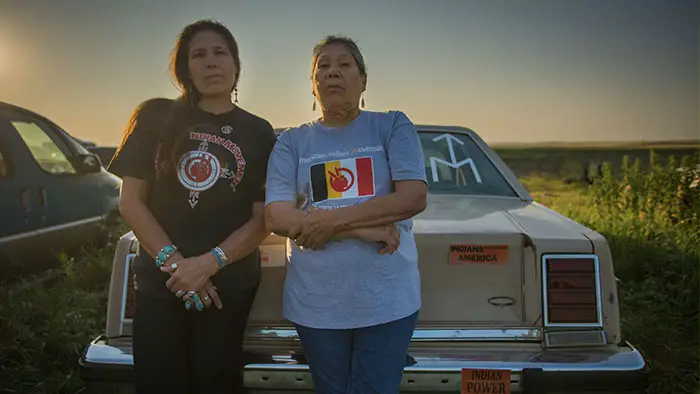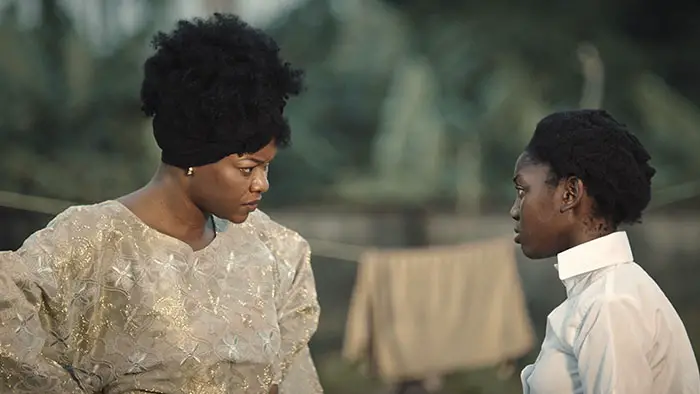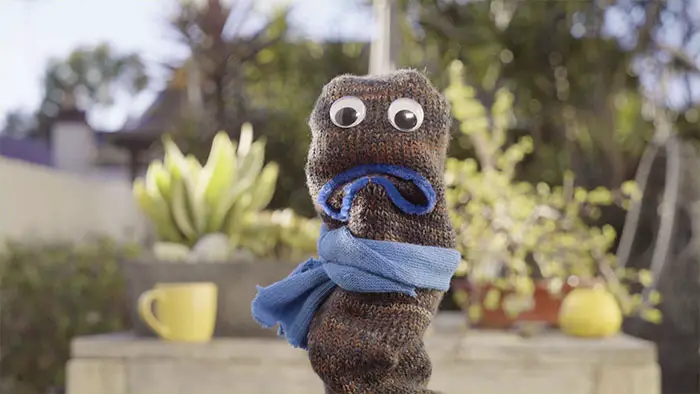
Establishing itself as Montana’s premier international film festival, the Montana International Film Festival, aka MINT, did not let a global pandemic keep it from going dark. Instead, MINT extended its Billings, Montana-based event to four weeks, September 17-October 10, with limited in-person screenings and added an extensive virtual viewing menu. However, for now, screenings in Red Lodge, Montana, will be on hold until 2021.
The tremendous success of the past two years has led to substantial growth for MINT. This year, an array of panel discussions and digital networking opportunities are available to more attendees than in the past. This includes a robust slate of 130 films submitted from 20 countries, four panels featuring industry professionals, and over 30 virtual conversations with directors and stars. Joining MINT as a sponsor in 2019, Tito’s Handmade Vodka stepped up for MINT’s extended, virtual, and limited on-site attendance to be the 2020 presenting sponsor.
The 2020 hybrid festival opened on Thursday, September 17, in-person at The Historic Billings Depot with a screening of “Montana Connections,” which featured nine short narrative and documentary films from Montana including Braveheart; Wooly Tradition; Xylem; The Heart of the Tree; The Botanist; The Day the Sun Died; Cold Call; Crow Country: Our Right to Food Sovereignty; The Perfect Candidate; and Anxiety. This Montana-based short film program was extremely well received, especially on the Festival’s streaming platform. “In the first 24-hours of the MINT, more than 350 streams were signed on for the opening of the festival,” said MINT Executive Director Brian Murnion. “That’s over 82 hours of films. It’s a great start to the festival.”

“…the festival was needed because of the chaos we have experienced this year…”
Through the unprecedented smoke from western fires, a global pandemic, social unrest, and the haul that is always required for an independent film festival, MINT not only rose to the occasion to put on the festival, but its purpose also has never been so defined. “Aside from the ongoing development of a film festival for Montana, we felt this year, more than ever, the festival was needed because of the chaos we have experienced this year,” said Murnion. “Everyone needed to feel connected and be part of their community. When the pandemic started, people were separated from each other. I had a need to connect, I wanted to feel safe and at peace with the world, even though the world is not at peace, and there was a need for Montana to come together and unite.”
Staying home and staying safe with the ability to watch films from one’s living room as well as being able to host small film screenings in two theaters with limited attendance and safe social distancing practices and safety measures, MINT was able to create a hybrid event. “We’ve doubled our acceptance rate because we added a virtual platform,” Murnion said. “We’re excited that we could say ‘yes’ to more great films this year. It’s also encouraging to see that more than 45% of the accepted films are directed by women. The strength and quality of our programming, combined with rigorous social distancing protocols, will enable our guests to watch festival movies at home and in-person over the course of four weeks.”
Murnion got a test-run in virtual programming in the spring, when he presented a Mother’s Day presentation of Liz Canning’s cycling documentary Motherload in a program he dubbed “environMINT.” The screening was offered “pay what you can,” and the same model applies for individual virtual screenings at MINT 2020.
A few world premieres include The Wick, a short film from the UK, which is a powerful period film. Other highlights include Big Fur documentary, which will screen in-person, as well as indigenous documentaries. In addition, there is a block of all female-directed films screening in person. Murnion also recommends Rez Dogs, which is in the vein of an early Robert Rodriguez with its “guerrilla” filmmaking style, and it was produced entirely on the Navajo Reservation.

“…causing everyone to think a little different because business is not as usual…”
Murnion’s ability to program a number of indigenous films, which is a foundation of the festival, is due to the need to acknowledge Montana’s Native American history. “Native American history is Montana’s history. There’s no way we could effectively create a festival around Montana culture and values without recognizing the state’s history, which includes Native American culture, customs, and traditions,” he said. “In our first two years, our Indigenous Panel conversations would discuss how indigenous people in the film industry are seen and treated. There was a theme of stereotypes that emerged from these discussions. This trend has been identified, and it’s an issue. This year we had film submissions featuring indigenous people in roles of the everyday protagonist. As a festival, we’re excited to bring and encourage this normality. In the short film, Totems, there’s a line about how people care more about indigenous art than they do indigenous people. We absorbed that. The festival has to be about people and humanity. Humanity first.”
Murnion said virtual screenings would continue after the pandemic, which is the silver lining. “It’s causing everyone to think a little different because business is not as usual,” he said. “The film festival model has not changed in decades, and the pandemic has caused everyone to rethink it. The future is looking more creative, and it will change how we program. As a result of this 2020 climate, the films over the next two years will be a testament to the pandemic and what has happened this year. Sharing and telling unique stories, many people will find their voice due to the pandemic and social unrest and start writing, creating, and sharing. I think we will see that this was not wasted time, but it will be a force of creativity, which we will see in the films released in 2021/2022.”
Murnion said this type of creativity has started to happen in Montana. Unlike most states, Montana does not have the population density issues that many metropolitan places do, so the ability to produce work in Montana is available. “There will be safety protocols to adhere to in order to produce movies. You might have to work with smaller crews and less talent,” he said. “Montana is a great location, and the state has an incredible tax incentive. You can produce work with safety restrictions in place, plus you can spread out and film wherever you want—this is during a pandemic—imagine when it’s not.”
MINT screenings take place at one of the two live festival venues in Billings, The Historic Billings Depot, located at 2310 Montana Avenue, and Art House Cinema located at 109 N 30th Street. Most of the films shown at the in-person screenings can be accessed online at https://watch.eventive.org/mint. Virtual Q&A’s and conversations with select filmmakers follow the presentations.

“Montana is a great location, and the state has an incredible tax incentive…”
Over the next four weeks, MINT has spread out the rest of its theatrical screenings, including a sneak peek screening of the narrative feature Small Town Wisconsin, directed by Niels Mueller and produced by Alexander Payne, a story of a party animal whose young son cramps his recreational style. On Thursday, September 24, brings the addiction documentary Coming Clean to The Historic Billings Depot. On Saturday, September 26, MINT will present a block of eight female-directed short films at the Art House Cinema: How Is This the World; In the Pink; Swings and Roundabouts; Bernadette; Oh Sh*t!; Parachute; Morning Mourning; and Treatment. On Thursday, October 1, MINT will present Block 1 of its narrative short films on screen at the historic Billings Depot: Totems; Handheld; 38 Minutes; The Suicide of Lillian Sellers; My Hero; The Wick; and My Brother Sam.
Director Dan Wayne’s documentary Big Fur is a fun portrait of eccentric artist-hero and World Champion taxidermist Ken Walker building a life-sized Bigfoot and unveiling her at the World Taxidermy Championships. Big Fur plays at the Art House Cinema on Saturday, October 3. The Indigenous Documentary Shorts Block will screen on Thursday, October 8, at The Billing Depot, and features six films: Future Ancestor; Dear Georgina; Crow Country: Our Right to Food Sovereignty; The Day the Sun Died; Kii Nche Ndutsa (Time and the Seashell); and Arapahoe truths. The Festival closes with Roko Belic’s documentary “Trust Me,” which shows how screen dependency and misinformation is creating a perception gap between the perceived state of the world and reality. It plays at the Art House Cinema on Saturday, October 10. Most screenings feature Q&A’s with some of the filmmakers (schedule permitting) following the screenings. And with the exception of Big Fur, all the theatrical screenings are available virtually.
Other highlights of the festival not summarized above are narrative and feature documentary series from animation to horror; international and documentary shorts programs; experimental/late night sections; new media, webisodes, and music films; student films; and a family and kids’ section—133 films in all. The full selection of films is here: https://watch.eventive.org/mint.
MINT’s third edition will see narrative and documentary features competing for “Best Of” prizes, including the MINT Spirit Award, as well as eight juried awards: Best Female Director, Best Narrative Feature, Best Narrative Short Film, Best Documentary Feature Film, Best Documentary Short Film, Best International Short Film, Best Indigenous Voices Film, and the Best Made-In-Montana award.
